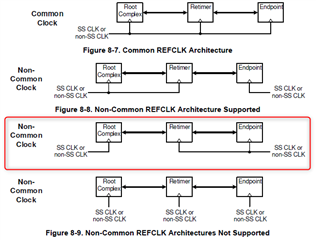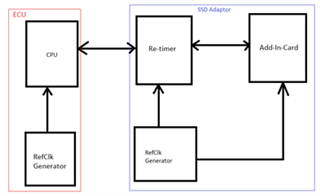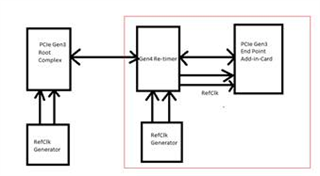Other Parts Discussed in Thread: , USB2ANY
Hello Forum,
I am working on Re-timer topic for one of our requirement. I came across Reference clock configuration in the DS160PT801 datasheet.
As mentioned in the datasheet , below marked separate reference clock connection is not supported.

In my design, Re-timer is placed on the Adapter board( Re-timer + Add-in-module) as shown in below picture.
As we have no possibility to place the Re-timer at CPU and Adapter board connected to CPU Via 3m Cable. Planned to design Adapter board with Re-timer.
#1. Does this Re-timer suitable to my design requirement? What are the challenges If I connect the RefClk as shown in below picture?

#2 Do we need to configure RefClk generator to give SSC modulated clock to Re-timer (or) SSC modulation will happen in Re-timer, if we configure the Re-timer to enable SSC. Please correct my understanding on SSC configuration.
#3. Whether all the active components(RefClk Generator, Root Complex, Re-timer and Add-in-card Module) on the data-path are required to enable SSC?
#3. Any suggestions for RefCLk generators with 2 output ports.
#4. What is the Hardware Tool used to configure the Re-timer? Any recommendations for Flashing kits.
#5. Can I use Buffer Clock output from Re-timer and connect to Add-in-Card? as shown in below picture.

Thanks
Best Regards
Bharath Muthukuri

